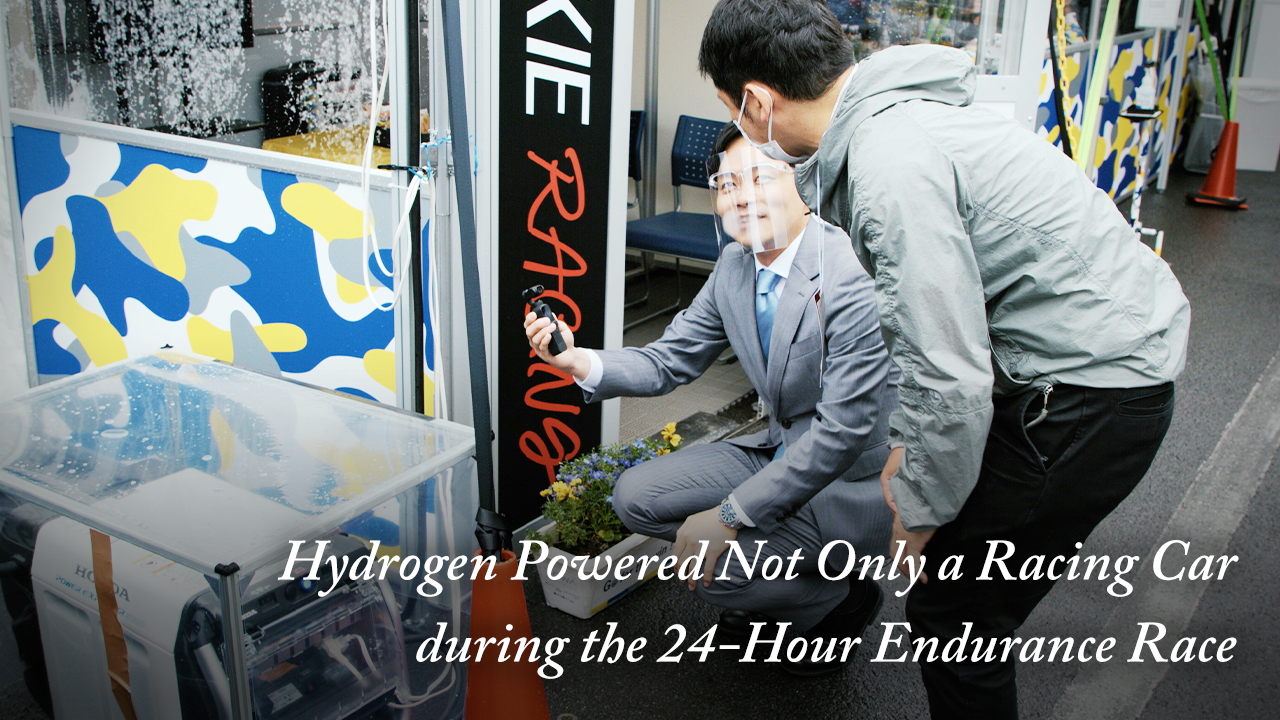
Behind the hydrogen-powered car's world-first completion of a 24-hour race, another hydrogen initiative was underway.

A hydrogen-powered engine showed its potential in the Fuji 24-hour race. At this event, however, it was not only the racing car that used hydrogen to work towards carbon neutrality. Even the pits and the spectator camping area were powered by hydrogen-derived electricity. As the race took center stage, Toyota Times reporter Kyonosuke Morita looked into the efforts being made behind the scenes.
In the pits, change is in the air
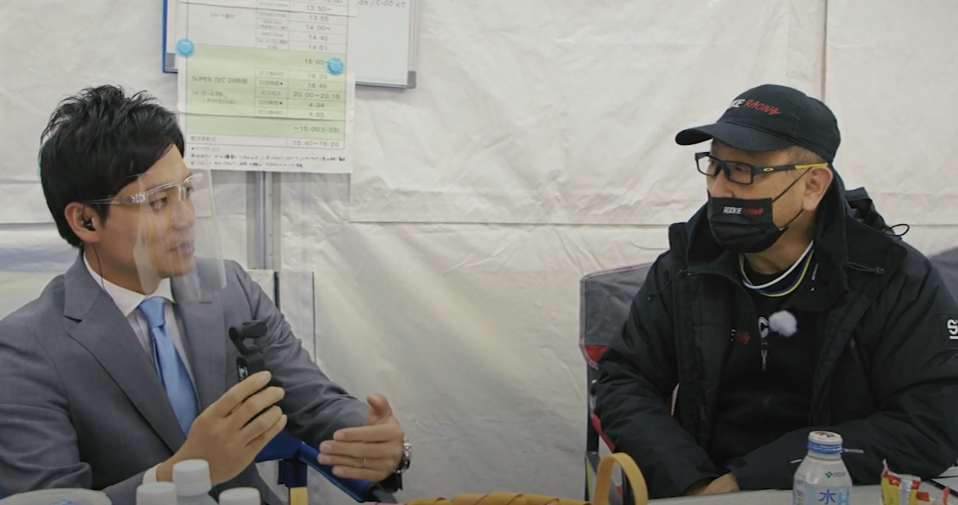
Awaiting Morita in the space behind the pits was President Akio Toyoda, who was also participating in the race under his driver name, Morizo. A true petrolhead, Akio had once responded to Editor-in-Chief Kagawa’s question about his taste in cars by saying, “I love cars that are loud and smell of gasoline”. When asked about his impressions of hydrogen, this is what Akio had to say:
Akio:
In testing, naturally the first thing you do is start the engine. When you do, you realize that the pits don’t have their usual smell … Through the Mirai (supplying electricity), hydrogen even powers the lightbulbs here. On top of that, the pits are quieter than usual.
Even backstage, the team is powered by hydrogen
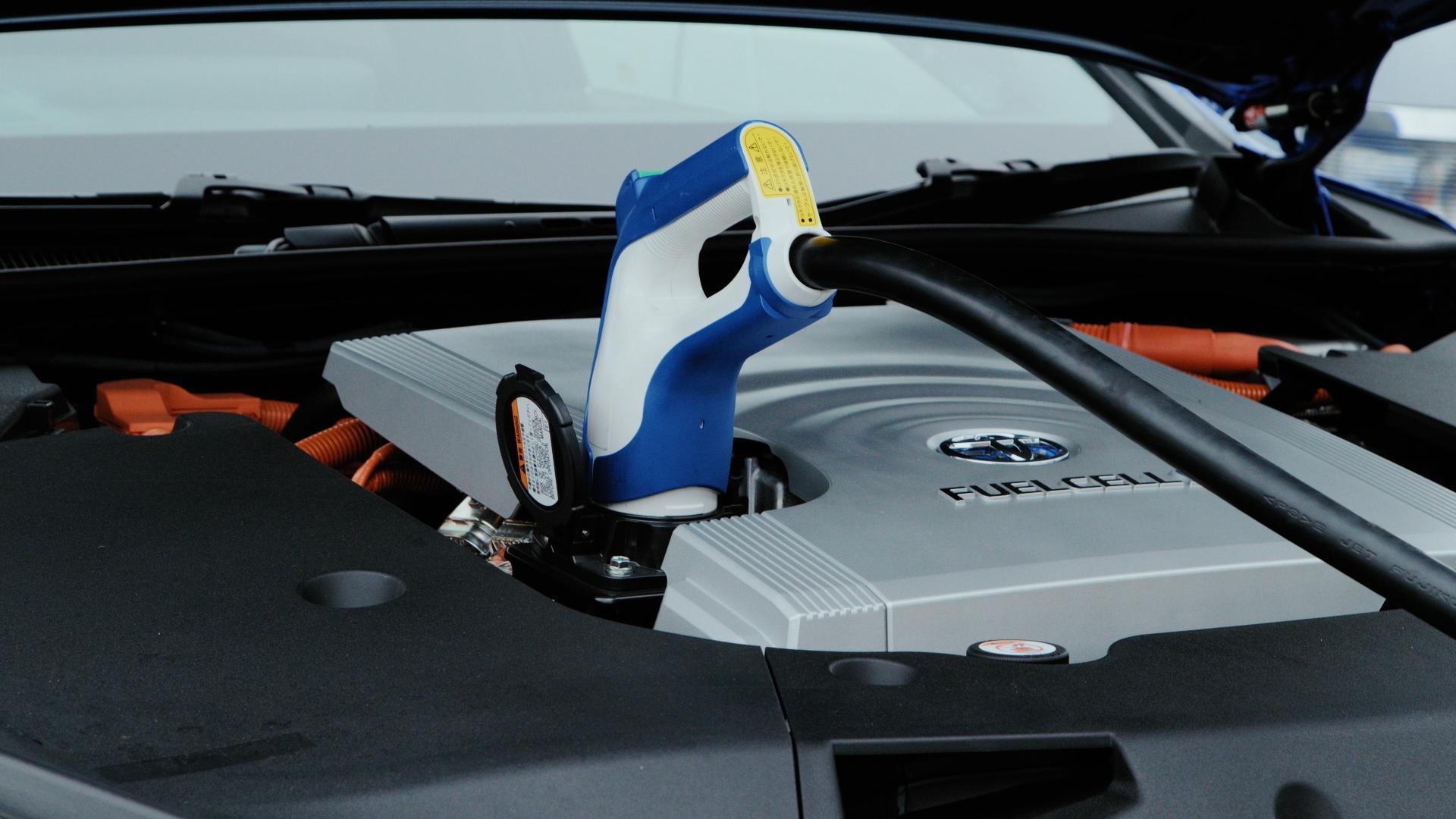
To learn about the hydrogen-based electricity supply system being used behind the scenes, Morita spoke with the person in charge of Toyota’s hydrogen projects, Shigetaka Hamada of the Commercial ZEV Product Development Division. He explained that the pits were being powered by a Mirai fuel cell electric vehicle (FCEV) parked out back. Electricity taken from the Mirai was sent to the pits via a large Honda Power Exporter.
Along with FCEVs, other electric vehicles such as plug-in hybrids (PHEV) and battery EVs (BEV) can serve as a household power source through a function known as Vehicle To Load (V2L). The Mirai also supports this function, meaning that it can be connected to external power supply devices made by other companies. An essential element in creating a hydrogen society, such compatibility also enables the car to serve as an important power source in disaster evacuation centers and other emergency situations.
Tracing the electrical cord, Morita finds the drivers’ waiting room. The screen that the drivers watch during their meeting, and even the room’s air conditioning, are all powered by hydrogen-derived electricity from the Mirai.
Morita:
So behind the pits everything is hydrogen too?
Hamada:
That’s right, back here it’s hydrogen as well.
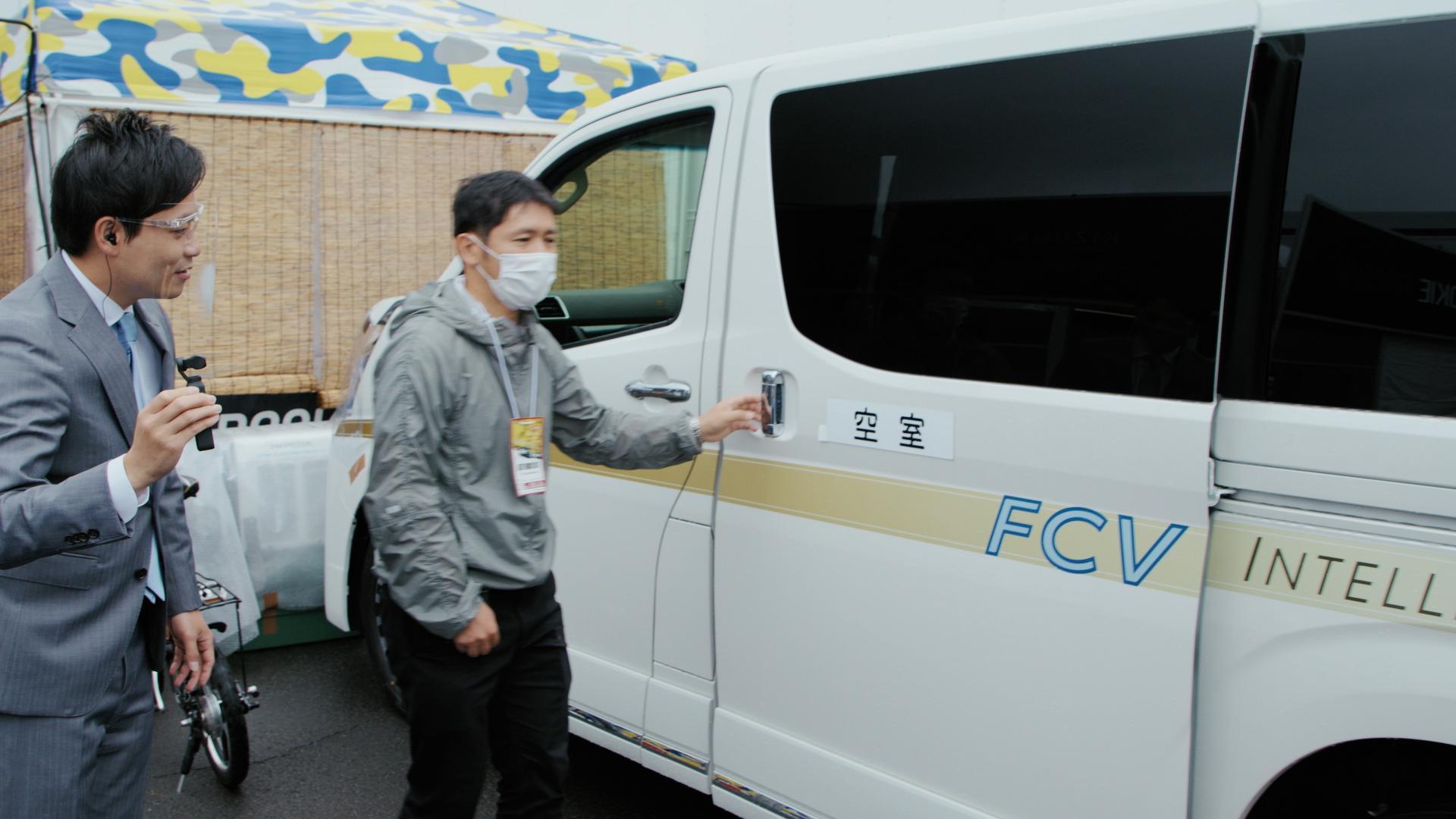
A white Granace van parked beside the pits also appeared to be an FCEV equipped with a Mirai unit. Furnished with desks and monitors, this mobile office is completely carbon-neutral, emitting no CO2 whether driving or being used for work meetings.
Standing alongside was another FCEV, this one a kitchen car outfitted with a refrigerator, induction cooktop, and even a rice cooker for preparing meals.
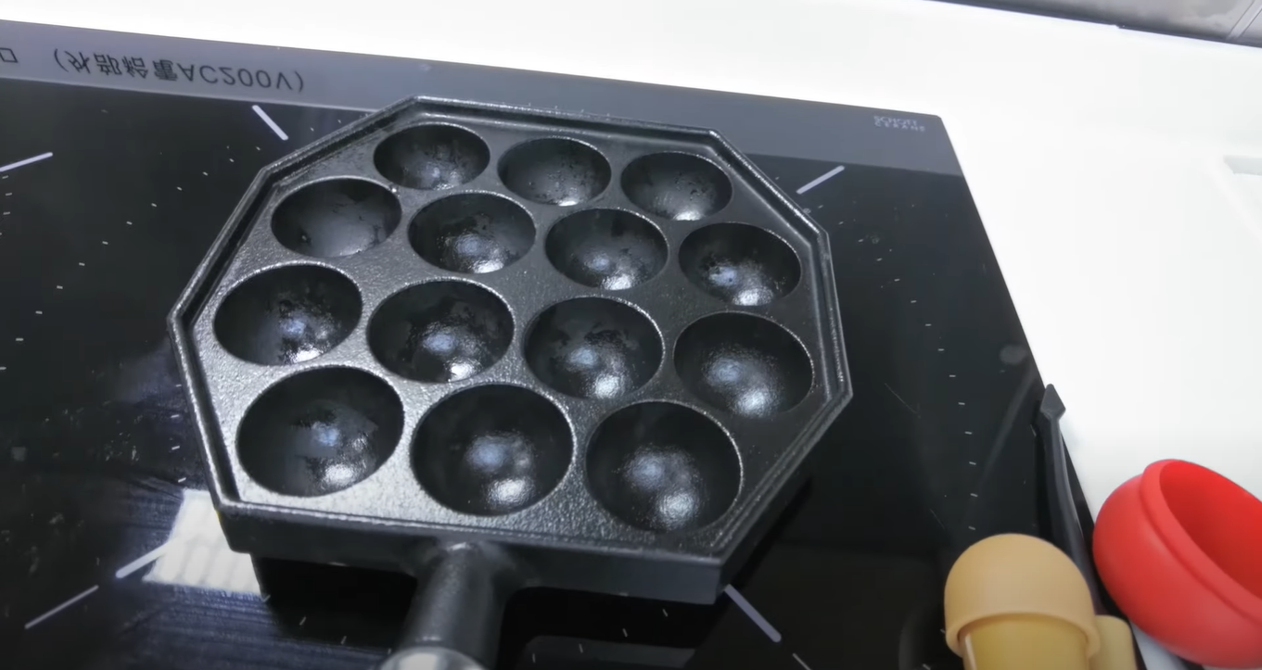
Morita:
You can cook takoyaki (ball-shaped octopus dumplings) while remaining carbon neutral?
Hamada:
Yes.
“We want to use the unique carbon-neutral properties of hydrogen to help many people,” emphasized Hamada.
Helping spectators experience the possibilities of hydrogen
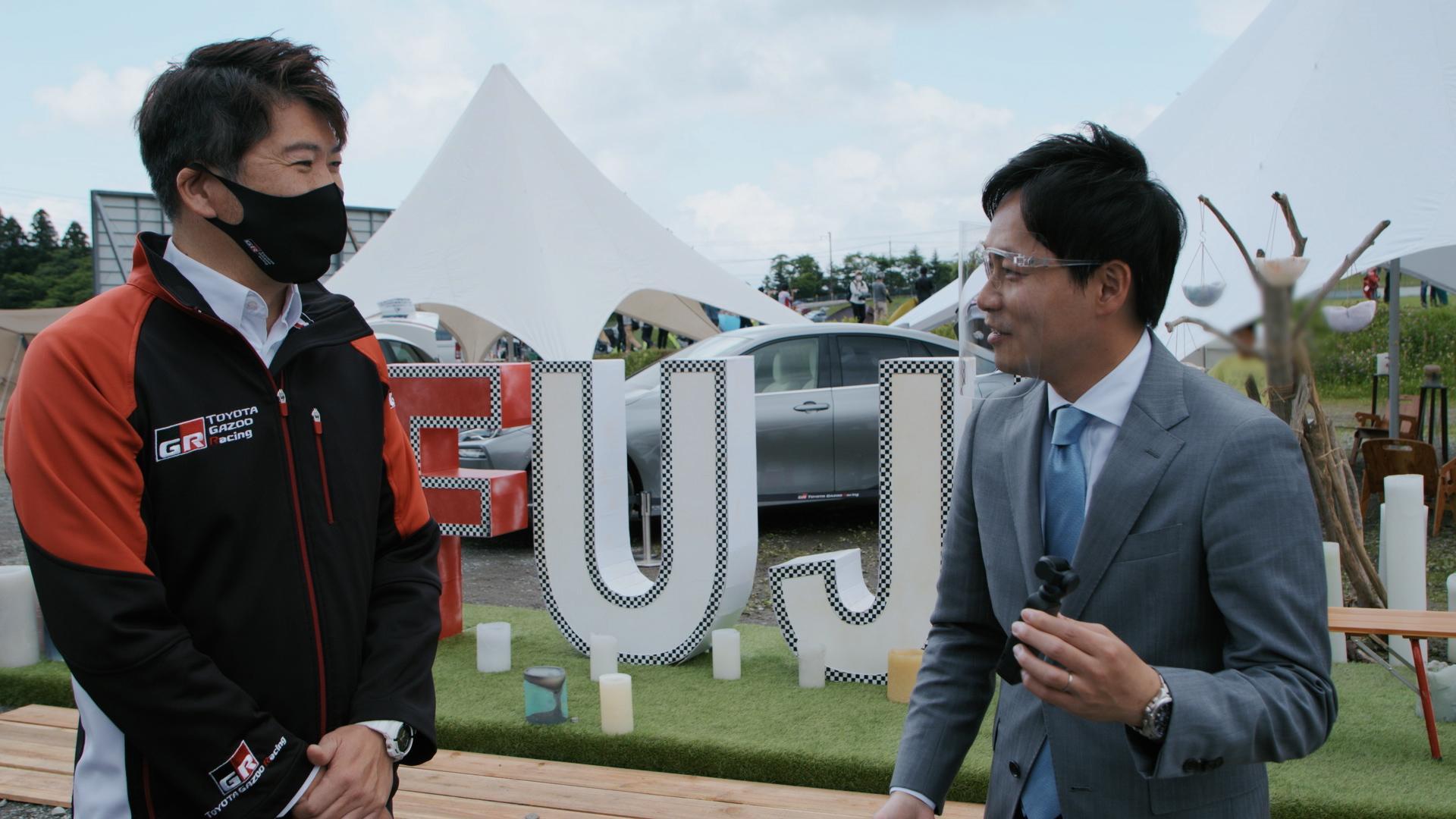
Some distance from the track, Morita found his way to CHILLOUT BASE 2021, the camping and glamping area where spectators can enjoy the 24-hour race from the comfort of their tents. There he was greeted by Jun Sato from the GR Brand Management Division. In addition to the Mirai, the area also showcased the Sora FC bus and offered visitors a place to charge their phones or watch the race on the big screen. Naturally, all the electricity was supplied by FCEV.
Sato:
All the electricity is supplied by FCEVs. That means there isn’t a single generator in this whole area.
Morita:
So you’ve set up a small-scale hydrogen-based society?
Sato:
I think that’s a great way of putting it.
Sato hopes that this demonstration will give visitors an opportunity to experience the possibilities of hydrogen first-hand. As he emphasized, there are many options for achieving carbon neutrality.
I’m sure things will look a little different 10 years from now
At this year’s Fuji 24-hour race, hydrogen not only powered a racing car but also the facilities behind the pits and in the camping area. “This environment is not yet the norm,” commented Akio, “but I’m sure that as the technology continues to get better and better, this will become a normal part of our world”.
These efforts will become the foundations for future hydrogen-powered engines and hydrogen-based societies. Speaking to Morita, Akio encouraged the media to share these efforts to ensure that, 10 years from now, we can remember how it all started with “this 24-hour race here in May 2021”.
Akio:
“Those old guys, they were the first in the world to run a hydrogen-powered engine. They didn’t even know what could be a solution, but they took on the challenge anyway. And their efforts were not filled with grim despair, but they looked like that they were enjoying it.”
That’s how I want the media to see our challenge.
Because we’ve taken the first step with that mindset, I imagine things will look a little different 10 years from now.

